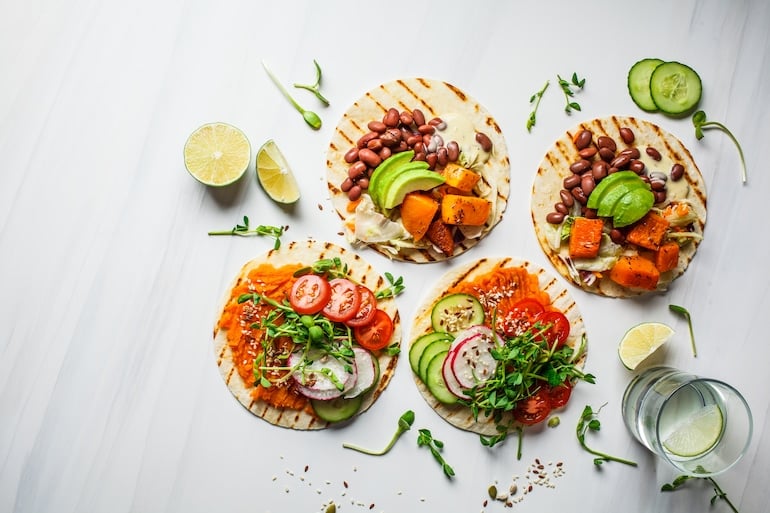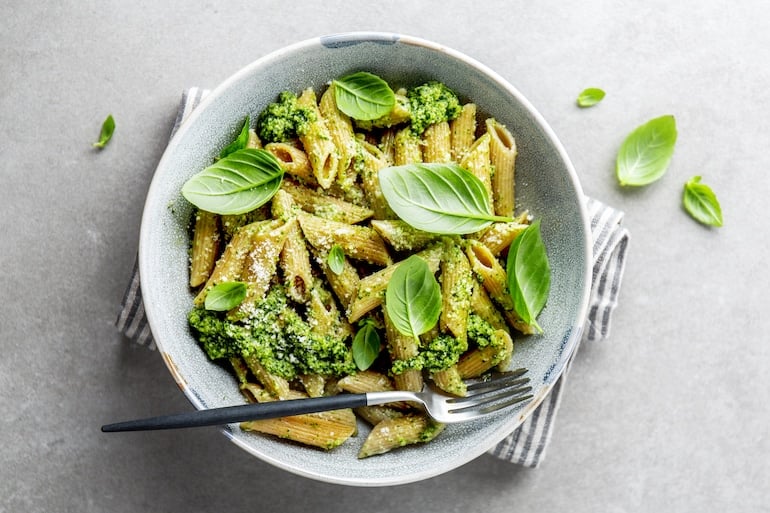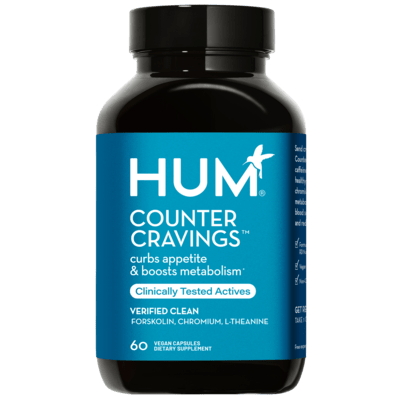You’ve heard of dieting before, but have you heard of reverse dieting? Experts break down what this nutrition approach is and explain how to reverse diet effectively and safely.
Many of us can say we’ve been on a diet at least once in our life, whether prepping for a big event, working towards a specific health goal, or simply trying to look and feel our best. While every diet is different, most involve restricting some type of food, a certain number of calories, or your intake of a certain nutrient (for example, carbohydrates as a means to lose weight). While in a lot of cases, any weight loss as a result of dieting is usually welcome, the issue with most diets is that they are only temporary and the weight comes back. Research published in the journal Medical Clinics of North America found that more than 80 percent of dieters actually gain back the weight that they lost during the diet period and some after five years.
In part, this is because most diets are not designed to be sustainable for the long run, which leads a person to often gain back all of the weight that they lost during the period of time they were following the diet once it’s finished or they’re no longer following it.
What’s more: Various health complications have often resulted from extreme dieting, especially in athletes and bodybuilders, warns Kimberly Duffy, RDN, LD, CPT, with Strength in Nutrition in Minnesota. “Those who underwent extreme caloric restriction and weight loss for competitions often suffered from hormonal alterations, like increased levels of cortisol and ghrelin and decreased levels of insulin, testosterone, leptin, and thyroid hormones,” she says. “These athletes struggled with decreased resting energy expenditures, increased hunger and decreased feelings of fullness, muscle loss, and fat gain once returning to regular eating habits.”
In recent years, more and more people have realized that staying in a deep deficit and in restriction for a while was causing more metabolic damage and health concerns, which is one reason why reverse dieting has surged in popularity. But what exactly is reverse dieting? We spoke to experts to find out everything you need to know—including how to reverse diet safely.
What is Reverse Dieting?

Reverse dieting is the process of slowly and strategically returning to an eating plan that is sustainable and healthy following a diet or a period of significant weight loss. This usually involves slowly increasing your caloric intake, week over week, back up to a maintenance level, explains Emily Tills, RDN, virtual nutrition coach in New York. “Everyone has a basal metabolism rate, or the minimum necessary energy requirements in order to sustain all of life’s processes, however, many diets try to take you well below that,” she says. “Reverse dieting brings you back up to maintenance intake and can help reduce weight regain risk as well as correct metabolic changes that often occur with dieting.”
Benefits of Reverse Dieting

While there’s not much medical research to support or back up the concept of reverse dieting, anecdotally it has garnered a great deal of support, including from dietitians and nutritionists. Here are some potential ways you can benefit from reverse dieting.
It Can Reset Your Metabolism
Reverse diets can be a great way to reset your metabolism after being in a calorie deficit for extended periods of time, according to Tills. “Our bodies are forced to make metabolic changes the longer we are in a calorie deficit so when we slowly bring our food intake back up to a true maintenance level, you’ll have more energy, better digestion, and burn more calories,” she says.
It May Help Prevent Muscle Loss
Often during periods of calorie restriction and low body weight, muscle breakdown can occur, explains Duff. “This is due to an increase of cortisol, the stress hormone, and a decrease in testosterone levels, which often accompany a diet,” she says. “Since muscle protein is more metabolically active than fat, this affects resting metabolic rate.” When reverse dieting, she always recommends that her clients incorporate increased protein intake and structured resistance training to help counteract the effects caused by reverse dieting.
You’ll Feel Better—and More in Control
Wondering how to eat more food but don’t know how? Coming off of a diet can feel a bit uneasy, especially if the diet involved significant calorie or nutrient restriction. Reverse dieting can help you add back calories in a healthy, stabilized manner. “Increasing your caloric intake slowly also improves your mental wellbeing because suppressing caloric intake can drain you mentally as well, making you feel sluggish and irritable,” adds Holly Schiff, PsyD, a licensed clinical psychologist with the Jewish Family Services of Greenwich.
Should You Try Reverse Dieting?
Most nutrition experts agree that dieting, in general, sets a person up for failure. “It often intensifies food obsession and usually isn’t sustainable,” says Kayley Myers, RD with Freedom and Glory Nutrition.
But if you are someone who consistently tries new diets, she recommends following them up with reverse dieting. “The concept may also be a good fit for someone who is nervous about stopping their diet because they are concerned that they will become out of control around food,” she says. “Some aspects of reverse dieting could provide these people with structure as they stop their diets.”
It may also be beneficial for cutting back on side effects that can follow stopping a diet cold turkey. “Some people experience bloating and other unwanted side effects when they suddenly begin eating significantly more than they had been on the calorie restriction,” she explains.
An important note: Individuals with a history of disordered eating, would not be good candidates for reverse dieting, as Myers warns that it may make it challenging to cultivate a healthy relationship with food. “These people would benefit from working with a registered dietitian to determine the right amount of food and types of food for their unique circumstances,” she adds.
How to Reverse Diet

Want to try it yourself? Here are a few expert tips to help you create a reverse dieting plan.
1. Determine Your Current Calorie Intake
Before starting a reverse diet, Tills recommends figuring out where your current calorie intake is trending. “I usually recommend that my clients track about one week’s worth of food, and then we run the average intake of calories as well as carbs, protein, and fat to see if we are in balance,” she says.
This will help you understand your starting deficit average, which can help you determine your endpoint so you can pace out how fast you will add back in calories. Usually, it will be 300 to 500 calories beyond the deficit you were in; however, if you were in a deep deficit, it may be between 500 to 1000 calories added back in,” she says.
2. Make a Flexible Plan for What You Are Going to Eat
Write down what you would normally eat for breakfast, lunch, dinner, and snacks while you were on your diet, as well as what time you plan to eat your meals. This will help you establish a plan that you can follow and ensure that you don’t go over or under your desired amount of food.
3. Start Adding in Calories Slowly
Tills recommends adding 50 to 100 calories each week to slowly bring you back up to maintenance. For example, if you started at 1550, for the first week you should aim for 1600. “This will take some time, and it is important not to rush it as jumping up in intake too fast can result in rapid fat and weight regain,” she says.
4. Add an Extra Serving of Food to Each Day
To make sure you’re not under-eating in the way you might have been while you were following your diet, Myers recommends adding an extra serving of food to each day’s worth of meals. “This might mean adding an additional piece of fruit at breakfast, adding avocado to one of your meals, or making a yogurt parfait for a snack,” she says. “Write down your ‘extra’ food for the week and where it will be served on your meal plan.”
5. Have Meals Prepped and Ready to Go
Myers suggests committing to eating within 30 minutes of the established time on your meal plan. This can be made easier if you have meals prepped in advance and ready to eat with you wherever you are. “Life happens—it’s easy to get distracted and, before you know it, it’s 2 p.m. and your lunch is still sitting in the work fridge,” she says. “Do your best to be consistent, while also having self-compassion for the days that you struggle sticking to the plan.”
6. Establish an End Point
After reaching the goal, you should not have to track intake as much any longer. Tills points out, however, that it can be helpful to spot check every so often to make sure your intake is not dipping nor are you eating too high. All in all, you should get to a point where you’ve collected learnings from your diet experience, but also added back calories and nutrients slowly so that you maintain instead of lose.
“Using a gradual approach to increasing your energy intake gives you some time to evaluate how you want your eating to look moving forward,” explains Myers. “Instead of taking a black-and-white view of food, a modified approach to reverse dieting may provide the opportunity to decide the next steps in your health journey.” She recommends considering some gentle ways to care for your body long term that go beyond food, for example, meditation, journaling, yoga, massage, etc., to hone in on your overall health and wellbeing.












